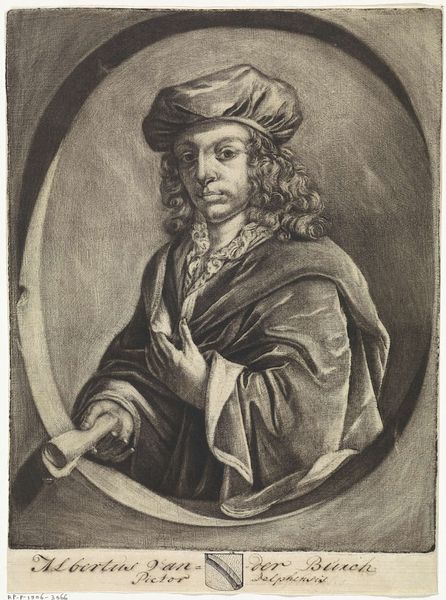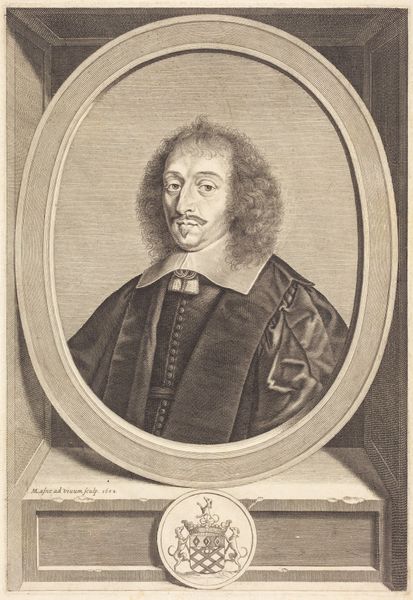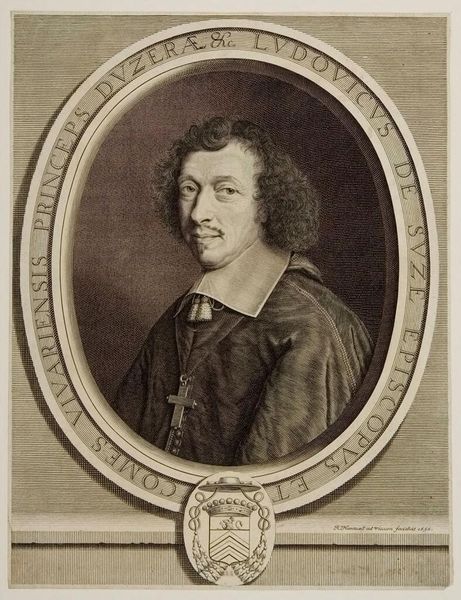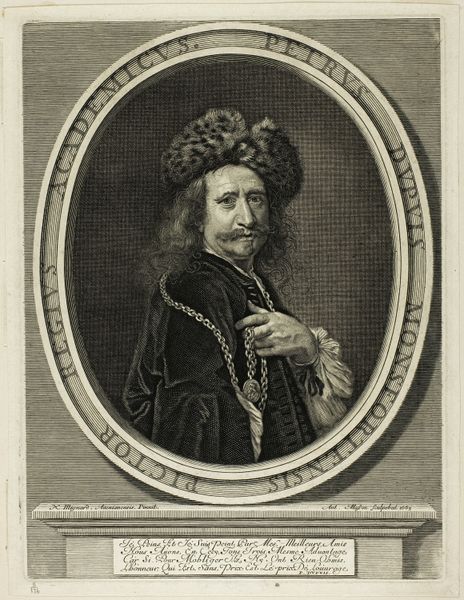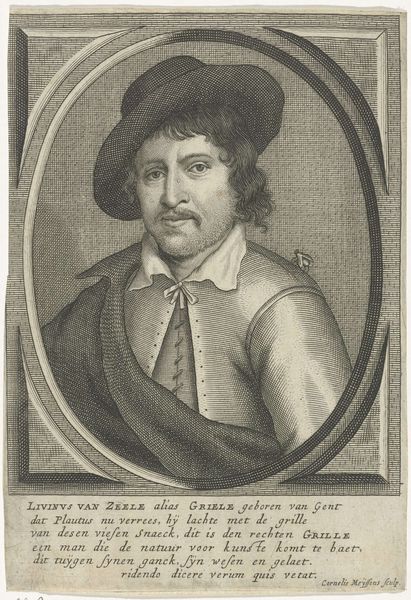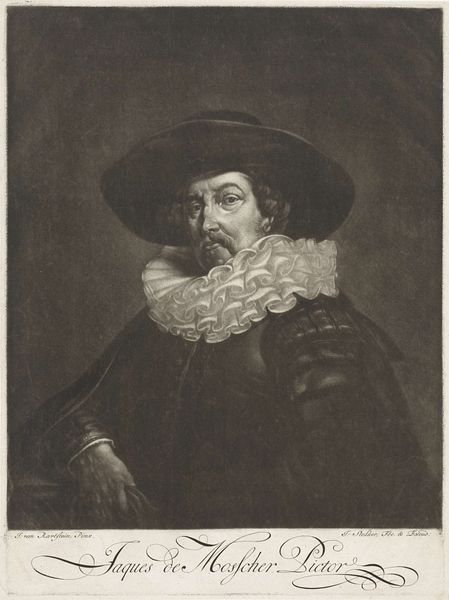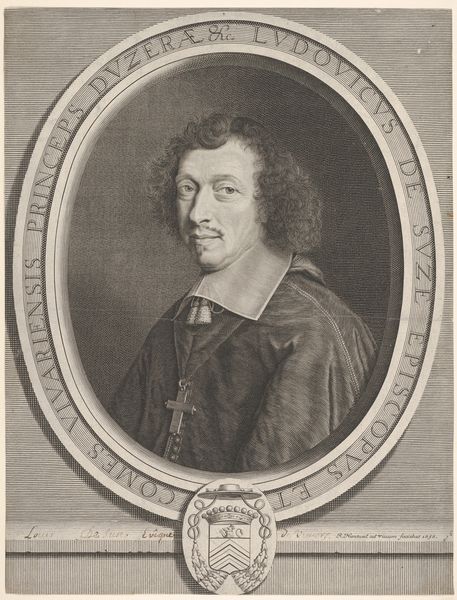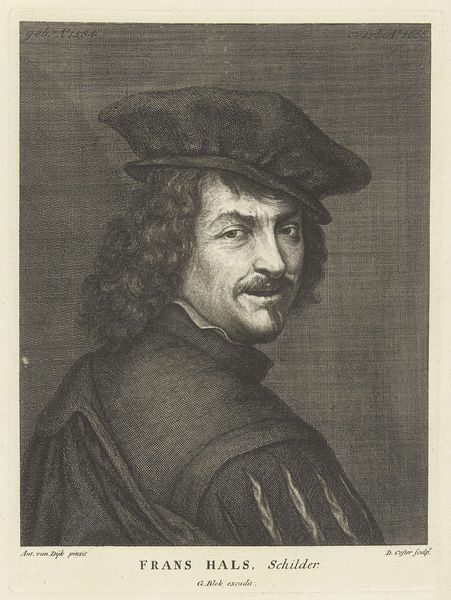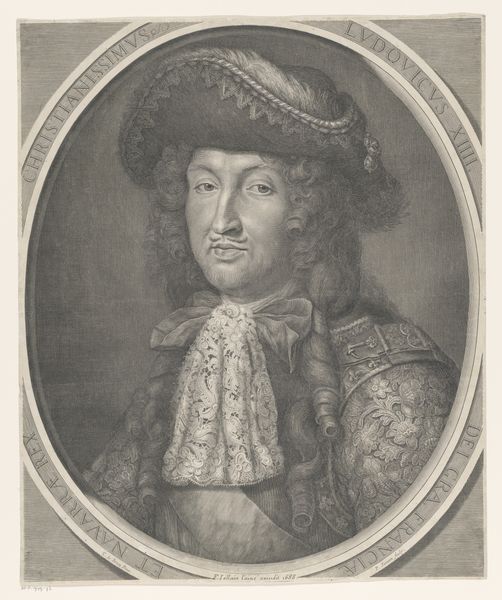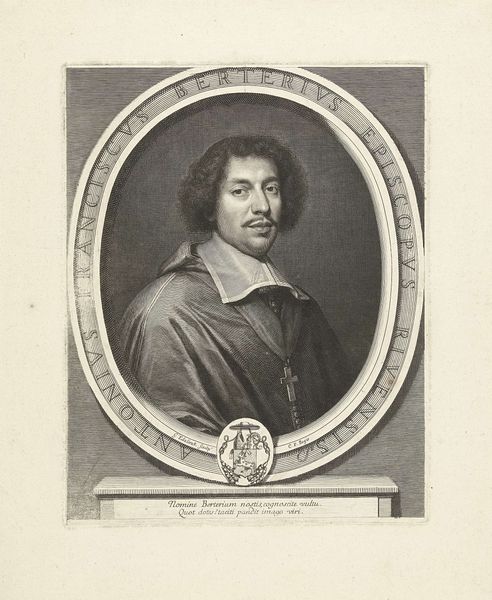
drawing, print, paper, engraving
#
portrait
#
drawing
#
baroque
# print
#
caricature
#
paper
#
engraving
#
portrait art
Dimensions: 364 × 264 mm
Copyright: Public Domain
Editor: This is a print of Johann Kupetzky, made in 1737, currently held at the Art Institute of Chicago. It's a pretty straightforward portrait, I think; but I'm struck by the soft rendering of the figure. How would you interpret this work? Curator: It’s tempting to see it solely as a portrait, and its soft execution lends it a personal, intimate feel. But let’s consider the context. In the Baroque era, portraiture was rarely just about likeness. How does the subject wish to be perceived and more importantly, what's being communicated about *status*? Editor: I guess you’re right, his clothing looks pretty elaborate, now that you mention it. He seems well-to-do, right? Curator: More than that! The act of commissioning a portrait, particularly an engraved print which allowed for wider distribution, was a powerful declaration. It suggests this was meant for public consumption. What aspects of his portrayal support that claim? Editor: Maybe it's the pose, and he is placed within an oval to set him apart from others. Plus, I suppose, creating multiple prints could imply this man wanted to disseminate images of himself among a broader public. Curator: Exactly! Think about how access to imagery was carefully controlled back then. By commissioning this, the subject actively participated in shaping his own narrative within a very controlled visual culture. Do you think that still applies today, but with say, Instagram? Editor: Wow, I never thought of portraits this way. It's so much more than just the surface appearance; it’s about power, persona, and the politics of display. Thank you for your insight. Curator: It works both ways; the social, economic, and personal always intertwined to influence the artist's perception of how their artwork can be placed within a larger world.
Comments
No comments
Be the first to comment and join the conversation on the ultimate creative platform.
